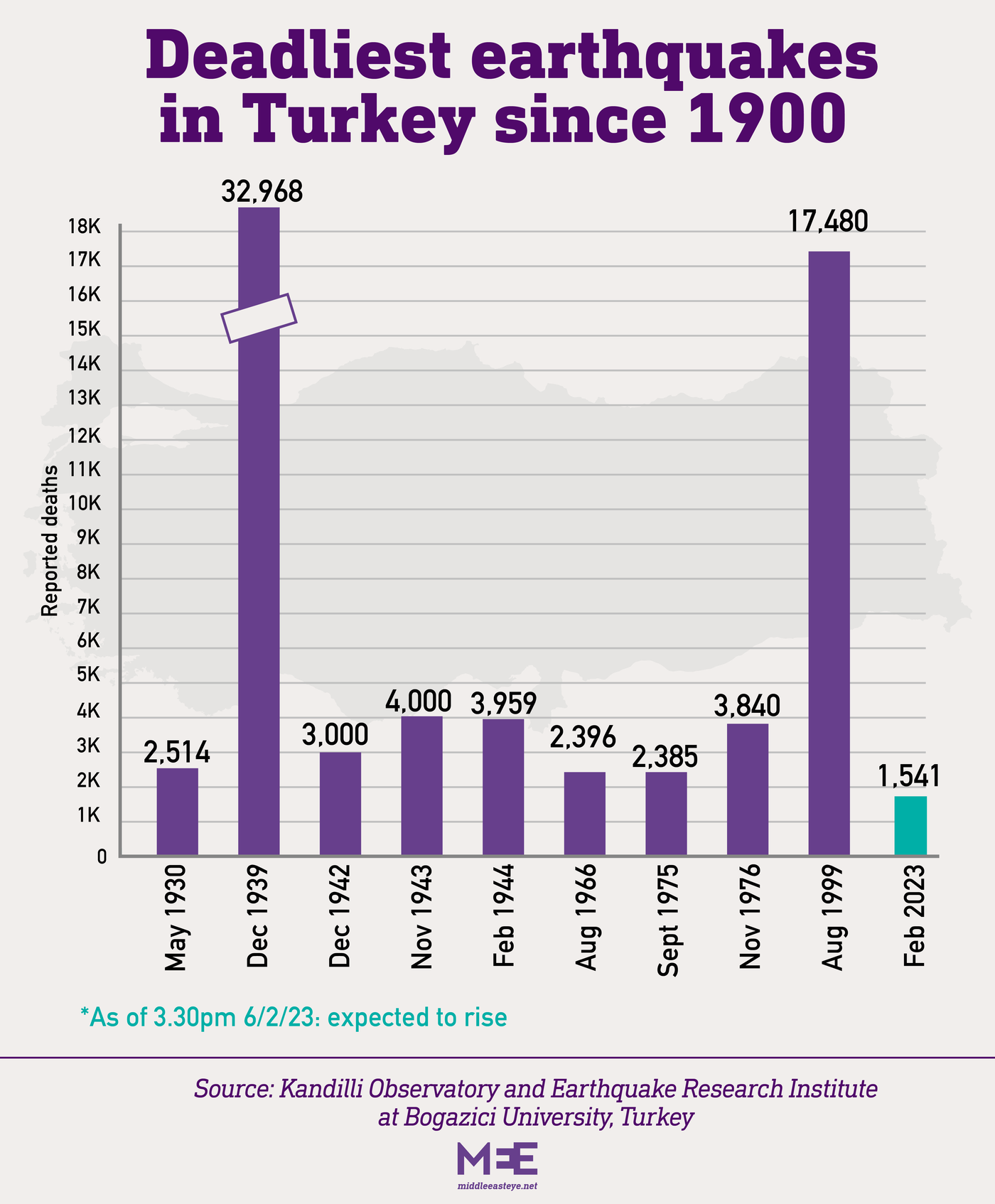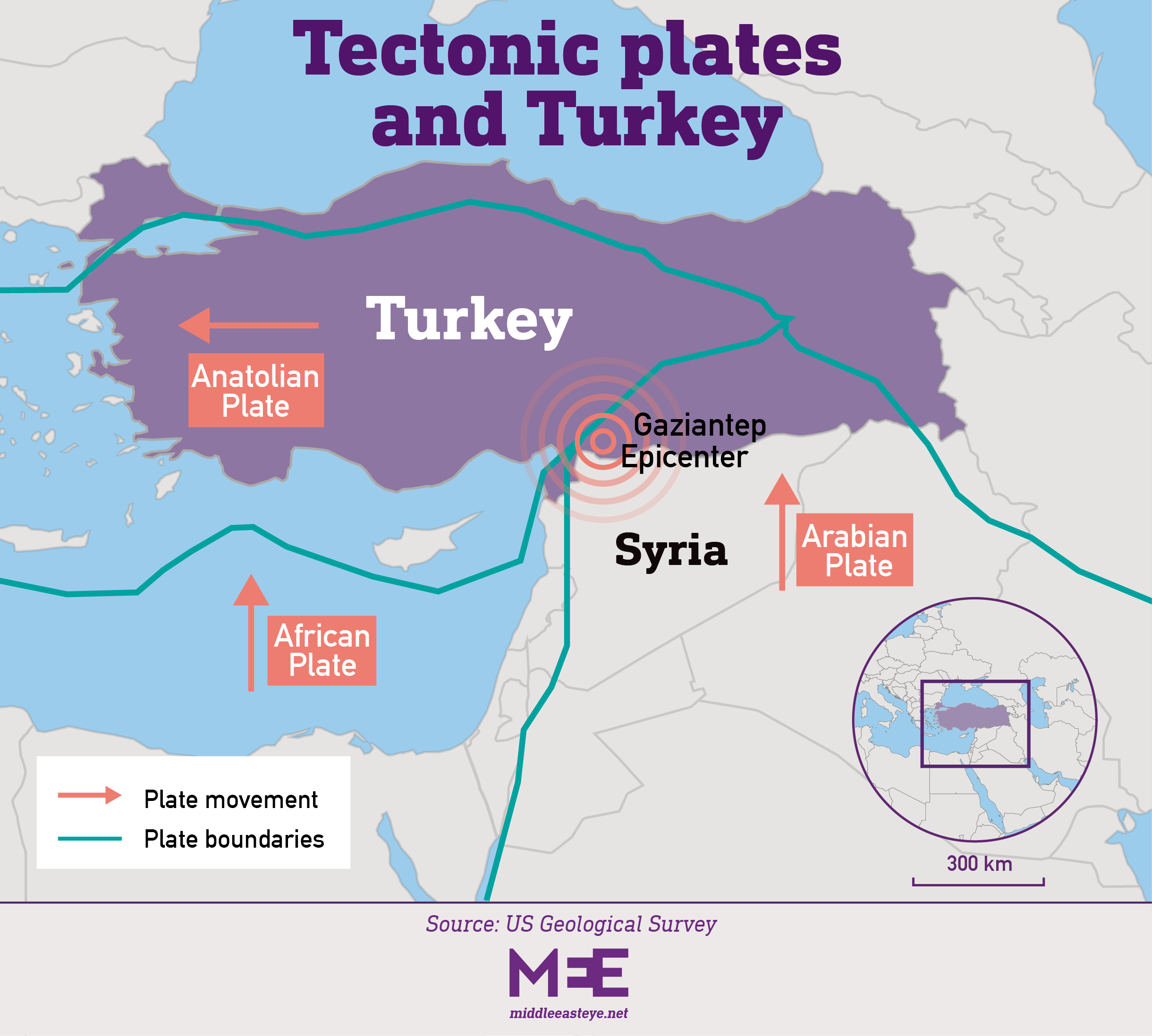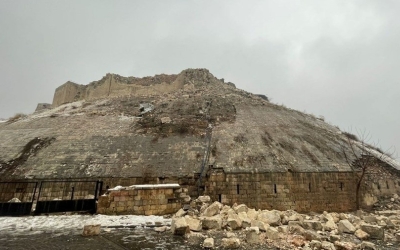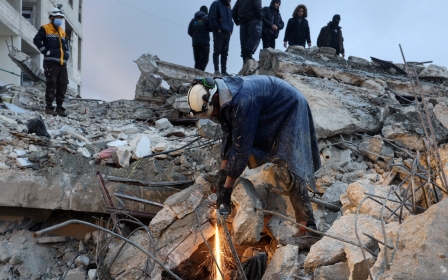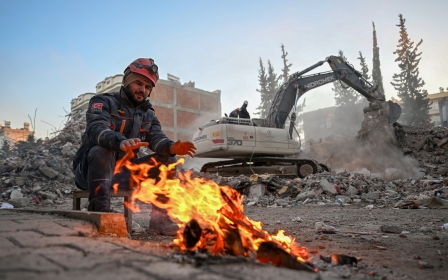Why is Turkey so prone to earthquakes?
A powerful 7.8 magnitude earthquake struck south-east Turkey and northern Syria in the early hours of Monday morning, killing at least 2,300 people and wounding thousands.
The quake struck at 4:17am local time near the city of Gaziantep and was followed by a number of aftershocks, including a 7.5 magnitude quake in the same region, the United States Geological Survey reported.
The initial earthquake, the largest to strike Turkey in decades, brought down entire apartment blocks and heaped more destruction on millions of people who fled the civil war in Syria and other conflicts.
At least 3,381 people died in Turkey and more than 20,426 were injured, the country's disaster emergency agency AFAD said early on Tuesday.
New MEE newsletter: Jerusalem Dispatch
Sign up to get the latest insights and analysis on Israel-Palestine, alongside Turkey Unpacked and other MEE newsletters
In Syria, at least 1,300 people were killed, according to Syrian government health officials and the volunteer Syria Civil Defence rescue group (White Helmets) on Monday evening, as the quake struck the provinces of Idlib, Aleppo, Latakia, Tartus and Hama.
Tremors were also felt as far away as Cyprus, Lebanon, Iraq and Egypt.
Thousands of buildings were reported to have collapsed across Turkey, with most of the casualties occurring in the southern province of Hatay.
Turkey at crossroads of plates
Turkey's high propensity for earthquakes is due to its location at the crossroads of three different tectonic plates.
These land masses, which make up the outermost shell of the Earth, are constantly moving and bumping into each other. Earthquakes most often occur at the plate's fault lines, which are large fractures on the planet's surface.
Most of Turkey is located on the Anatolian tectonic plate, which sits between the major Eurasian and African plates and a minor one, the Arabian.
As plates are forced up against and under each other, two plates can get "stuck" due to friction.
When these plates finally get "unstuck" as a result of a build-up of pressure, they release a huge amount of energy that is felt in the form of earthquakes, or tsunamis when tectonic plates converge under water.
History of quakes
Turkey's location, converging on the three tectonic plates, has resulted in repeated major earthquakes over the past century.
In December 1939, a 7.8 magnitude quake struck near the city of Erzincan in eastern Turkey, killing over 30,000 people.
There were several more quakes in the following decades, including the 1976 Caldiran-Muradiye quake in the eastern Van province, which resulted in more than 4,000 deaths.
The deadliest earthquake since the 1939 disaster struck in August 1999, when a 7.4 magnitude quake hit the western city of Izmit, in the region of Marmara. More than 17,000 people were killed and over 43,000 injured.
According to the country's Disaster and Emergency Management Authority (AFAD), Turkey recorded over 22,000 earthquakes in 2022.
Monday's quake is the most severe to hit the country since 1999. It comes as the region is experiencing a snowstorm that is expected to continue until Thursday.
This article is available in French on Middle East Eye French edition.
Middle East Eye delivers independent and unrivalled coverage and analysis of the Middle East, North Africa and beyond. To learn more about republishing this content and the associated fees, please fill out this form. More about MEE can be found here.


